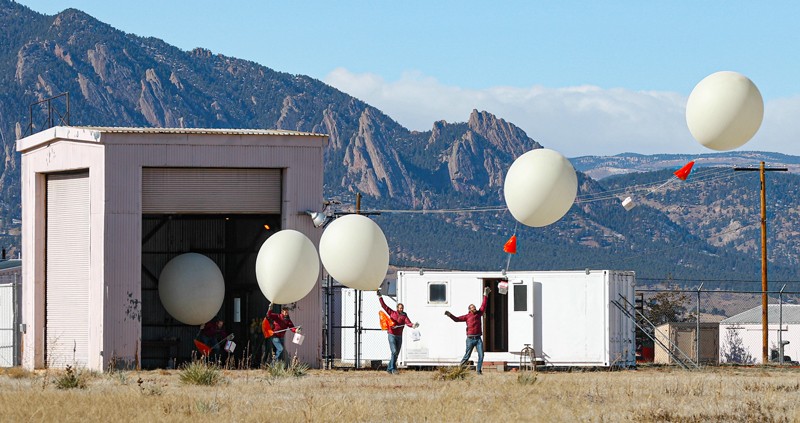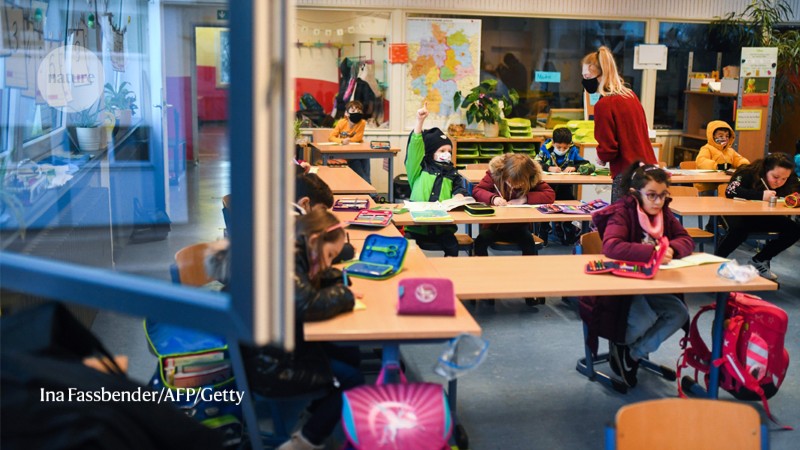Hello Nature readers, would you like to get this Briefing in your inbox free every day? Sign up here
A US National Academies of Sciences, Engineering, and Medicine report urges the US government to launch a federal research programme to explore the controversial field of solar geoengineering. It’s one of the boldest calls yet for the government to investigate whether it’s feasible — or even wise — to artificially cool Earth by altering clouds or injecting particles into the atmosphere to reflect sunlight. Previously, similar advice has gone largely unheeded. But concern about climate change is on the rise in the US government, which could make this a politically opportune moment.
Nature | 6 min read
Political scientist and politician Mariya Gabriel is overseeing the implementation of the European Union’s new research programme, Horizon Europe, which will distribute €95.5 billion (US$113 billion) over 7 years. She outlines the five goal-oriented ‘missions’ — on cancer, climate, oceans, future cities, and soil and food security — that will set the path for research in Europe. “We have made progress, but there are signs of stagnation” in European research, says Gabriel. “We must adapt to the new ways research and innovation are happening.”
Nature | 6 min read
There seems to be nowhere left on Earth to view the stars without encountering light pollution from space stuff. After analysing light scattered off the collective cloud of satellites and debris above Earth, researchers found that human-made objects cast a background glow on the night sky even when the individual satellites aren’t visible. Stargazers might not be able to notice the difference with the naked eye, but astronomers worry that the pervasive glare of debris orbiting Earth could obscure our view of distant galaxies. “As space gets more crowded, the magnitude of this effect will only be more, not less,” says astronomer John Barentine.
Science | 5 min read
Reference: Monthly Notices of the Royal Astronomical Society: Letters paper
The 340-metre asteroid Apophis, a frequent visitor to Earth’s air space, will not hit our planet for at least the next 100 years. NASA officially removed the asteroid from its ‘risk list’ last week after radio observations ruled out the possibility of an impact in the coming century. “When I started working with asteroids after college, Apophis was the poster child for hazardous asteroids,” says Davide Farnocchia of NASA’s Centre for Near-Earth Object Studies. “There’s a certain sense of satisfaction to see it removed from the risk list.”
ABC | 4 min read
Features & opinion
Table of Contents
On 1 March, the World Health Organization released a long-awaited road map to better ventilation for indoor spaces to prevent the spread of COVID-19. But governments are failing to provide the guidance or resources that will make rooms safer, say aerosol scientists. Building engineers note that revamping indoor spaces is not trivial, not least because we don’t know exactly how much we need to do. And governments and businesses are still spending a lot of money on disinfecting surfaces, despite evidence that it is rare for the virus SARS-CoV-2 to pass from one person to another through contaminated surfaces. A short-term solution might be inexpensive CO2 monitors, which can provide a rough measure of whether or not ventilation is adequate.
Nature | 12 min read
Religious groups and scientists can and must collaborate to stall climate change, argues political scientist Tobias Müller. “I’ve seen the power of this approach,” writes Müller, citing the example of faith-based organizations that have divested from fossil-fuel companies. But “time and again, I see chances to connect falter because of wrong assumptions and miscommunication”. With the epoch-defining COP26 climate conference coming up this year, Müller explains how to forge the alliances needed to help the climate.
Nature | 5 min read
Some early-career palaeontologists are making moves to challenge the discipline’s legacy of colonization by including local people in their digs and repatriating fossils to their home countries. Valuable fossil troves are scattered across the planet, but most fossils unearthed in the developing world are spirited away to institutions in Europe and North America. Sweden-based palaeontologist Mohamad Bazzi says efforts to counteract the colonial past in fossil research are a step towards empowering developing nations to support their own research into Earth’s history.
New York Times | 8 min read


